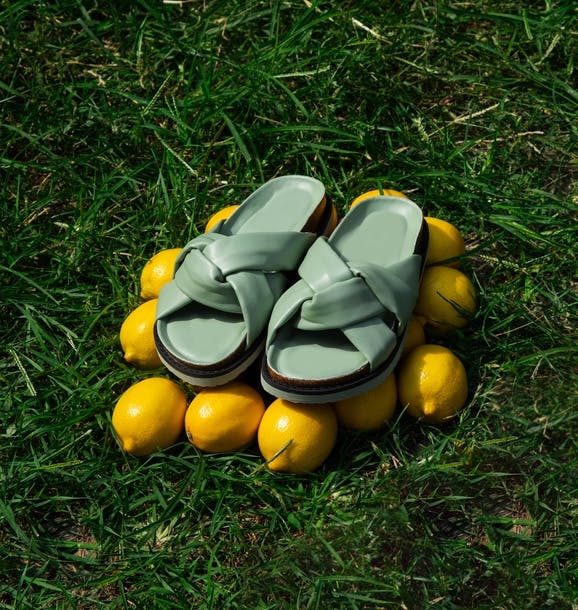Meet Mike. Mike is the proud owner of a family-owned shoe retailer based in New Jersey that we’ll call Comfy Shoes, to preserve their anonymity for this story. Mike’s boutique specializes in name-brand shoes; and though small, carries all the same brands and hard-to-find styles as leading, customer-favorite department stores.
Comfy Shoes has been in business since 1947, supplying the latest styles to generations of its loyal customers. As with many family businesses and brick-and-mortar retailers, Comfy Shoes was ordered to temporarily shut its physical doors in March of 2020. In the US, the early days of the pandemic arguably had the largest impact on the day-to-day lives of those in New York and New Jersey, as COVID ravaged its citizens, leading to extreme pressure on its hospital network, healthcare workers, and frontline workers alike.
Serving his customers and seeing their bright faces daily was what Mike knew best. For generations, his family had run Comfy Shoes with pride. To suddenly shut their physical doors and play the waiting game as lockdowns, restrictions and pandemic hindered their ability to sell was a huge adjustment for them. While, as an astute business owner, Mike was familiar with the benefits of ecommerce, Comfy Shoes had never taken their business online before. Mike knew he needed to come up with a plan to not only get Comfy Shoes’ ecommerce presence ready to go, but in a way that would have his customers come running into their virtual doors.
Sure, Mike could’ve listed his inventory online and just waited for sales to come in as they did. But getting the same volume of online foot traffic as Comfy Shoes saw at its premiere downtown location was unlikely. With so many local businesses with pre-existing loyal customer bases, Mike had to figure out how to help Comfy Shoes stand out amongst its competitors, provide a useful product to shoppers in a time when shoes weren’t a hot commodity, and keep his sales up.
The solution lay within the problem, for as many people who weren’t wearing shoes as much; working from and learning at home; just as many were. Healthcare workers, who stood on their feet for double shifts on-end, with no relief, desperately needed comfy shoes. Mike figured it out. Instead of relying on customers to buy shoes for themselves, or marketing towards healthcare workers who were underpaid, overworked, and not exactly in the mindset to be making purchases for themselves; he would invite customers to purchase a pair of shoes to be donated to a healthcare worker in need.
Here’s how it worked: Mike had his supply chain lined up already–so he selected a pair of comfortable shoes, purchased them at-cost from his supplier and priced them for sale–ensuring his profit margin for an item of that category. Next, Mike leveraged his access to Material’s retail toolkit and the marketing support it includes for all merchants. He worked with the Material team to select a template and provided the information he wanted on the site–and within 48 hours, Comfy Shoes was up and running online for the first time in their 73-year history!
Once the site was built, the team at Material helped to build an email marketing campaign, design and share social posts and even featured the initiative on the main Shoptiques.com homepage! The team took the guesswork out of marketing, so Mike could focus on preparing his business for their new foray into the world of ecommerce.
Once a customer purchased a pair of shoes for themselves, they had the opportunity to pick one of five local hospitals that Comfy Shoes would donate an additional pair of shoes to. Comfy Shoes took care of the rest by delivering shoes to the chosen hospitals in bulk and updating their customers once their orders were fulfilled.
It was the perfect equation. In a time where people were feeling particularly philanthropic–wanting to “do” something, especially for healthcare workers–customers felt like they had done a good deed (and they had!) and Mike met his profit margins, and kept Comfy Shoes afloat. In fact, this strategy worked so well that Mike went from $0 in ecommerce sales prior to March 19, 2020 to online sales amounting to $44,000 from his “give a pair” campaign just in the days between March 19 and April 10, 2020 alone!
While sales from this campaign undoubtedly slowed to a halt as the devastation from the pandemic slowly lifted, Comfy Shoes may have very well been the first retailer of its kind to embark on a donation initiative of this style, but it certainly wasn’t the last. In May 2020, just a few weeks after Comfy Shoes’ pilot campaign launched, Crocs began a similar campaign that donated just under 1M pairs of shoes to healthcare workers in 2020. Without the ability to act quickly, and get his website set up overnight thanks to the Material ecommerce toolkit, Mike would’ve never been able to keep up his volume and facilitate giving back to his local healthcare network.
READ PART TWO of our series on Comfy Shoes and their skyrocketing ecommerce business!




